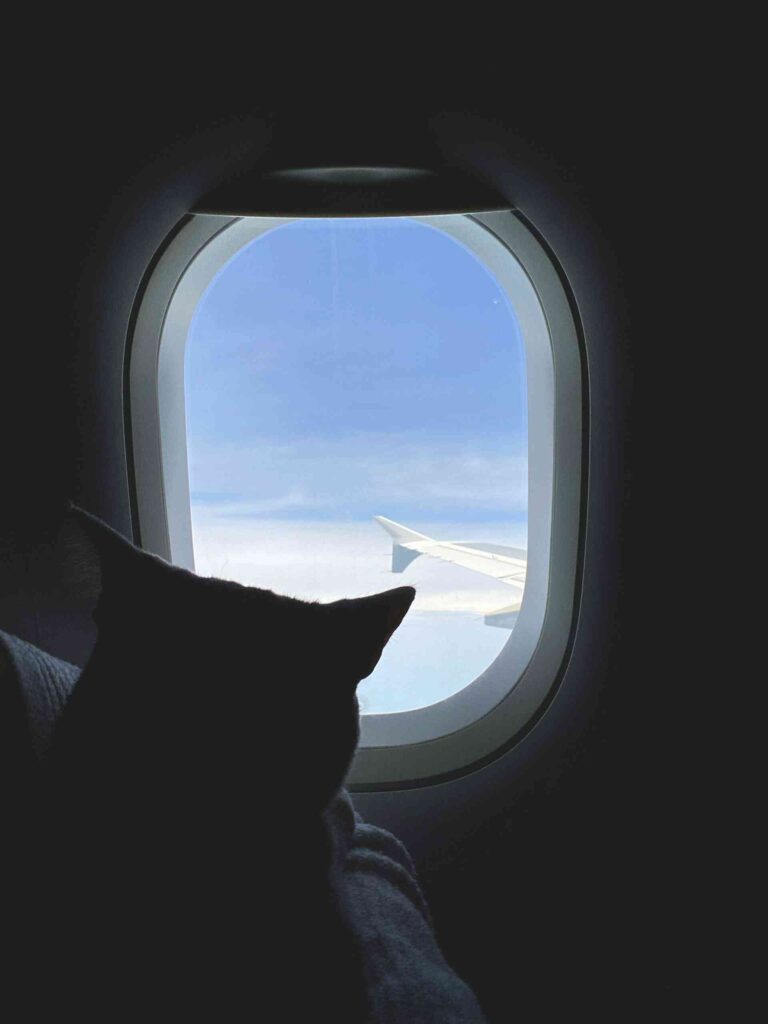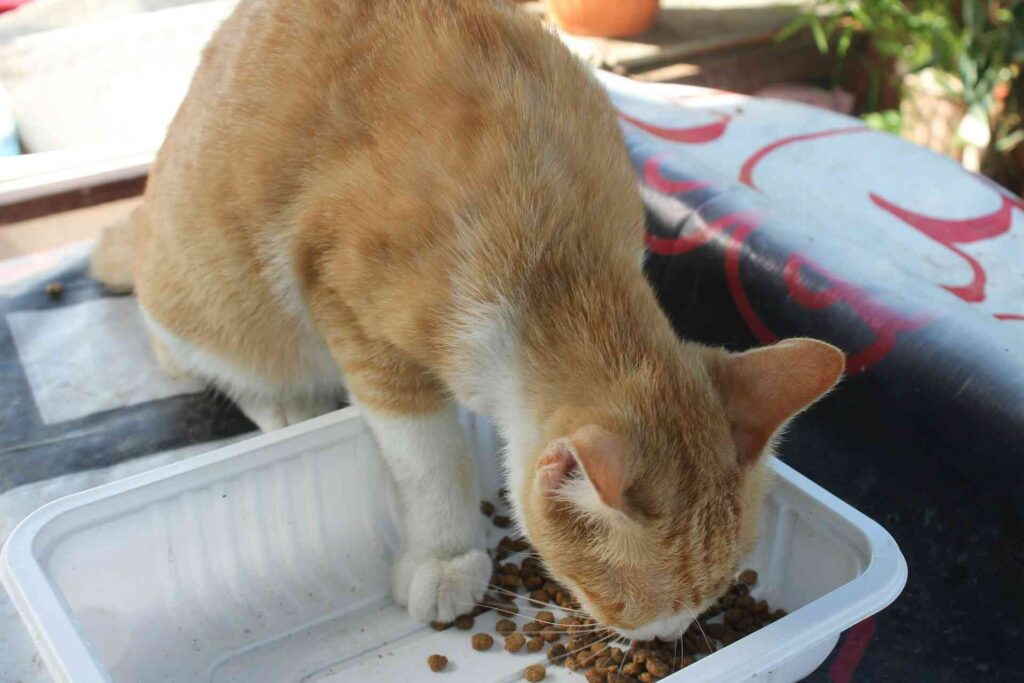That heart-sinking moment when your normally confident cat transforms into a trembling, hiding shadow at the mere sight of a travel carrier isn’t just coincidence, it’s the result of common travel preparation mistakes that countless cat owners unknowingly make. Whether you’re planning a weekend getaway or extended vacation, the way you handle your cat’s care during travel can make the difference between a smooth experience and a stressful ordeal for both of you.
If you’re planning a trip and wondering how to keep your feline friend happy (whether they’re joining you or staying behind), you’re in the right place. Let’s explore the most common travel mistakes cat owners make and how to avoid them for a stress-free experience, for both you and your cat.

1. Last-Minute Carrier Introductions
Most cats disappear the moment they spot their carrier emerging from storage. Why? Because they only see it before stressful experiences like vet visits or travel.
The solution: Keep the carrier out as a regular part of your home environment. Place comfortable bedding inside and occasionally drop treats in there, turning it into a positive space rather than a harbinger of doom. Start this process weeks before travel, not the day before your trip. Your cat will thank you by not turning into a clawing, hiding nightmare when it’s time to leave.
2. Changing Litter During Travel
Well-meaning cat owners often switch to “travel-friendly” litter options just before a trip, thinking it’s helping. In reality, cats are particularly sensitive to litter changes, and introducing something unfamiliar during an already stressful time can lead to elimination problems.
The solution: Stick with what your cat knows. If you’re bringing your cat along, pack their regular litter. If they’re staying home with a sitter, maintain their normal brand. For long travels, bring a small container of their everyday litter rather than buying something new at your destination.
3. Overlooking Medication Needs
Many cat owners wait until the last minute to refill prescriptions or forget to consider how travel might affect conditions like anxiety or motion sickness.
The solution: Create a pet medication checklist at least two weeks before departure. Refill any prescriptions, and consult with your veterinarian about possible travel anxiety remedies if your cat has shown stress signs before. Remember that some calming aids need to be started several days before travel to be effective.
4. Insufficient Research on Pet-Friendly Accommodations
“Pet-friendly” doesn’t always mean “cat-friendly.” Many accommodations that welcome dogs have policies that exclude cats or impose significant restrictions.
The solution: Call ahead and ask specific questions about their cat policies. Does the room have places where a cat could hide and be difficult to retrieve? Are there additional cleaning fees? Is there a secure way to prevent your cat from escaping when room service enters? Never assume, always confirm.
5. Letting ID Info Go Out of Date
Between booking flights and packing bags, ensuring your cat’s identification is current often falls through the cracks.
The solution: At least one month before travel, verify that your cat’s microchip information is updated with current phone numbers and addresses. For the journey itself, attach a secure collar with an ID tag that includes your cell phone number and destination information.
Comparison: Cat Boarding Options When You Travel
| Option | Pros | Cons | Best For |
|---|---|---|---|
| In-Home Pet Sitter | • Cats stay in familiar environment • Daily human interaction • Home looks occupied | • More expensive • Finding trustworthy sitters can be challenging | Cats who stress easily or have medical needs |
| Cat-Only Boarding | • Specialized cat care • Veterinary supervision often available • No dog stress | • Unfamiliar environment • Can be pricey • May require vaccinations | Social cats or those needing medical monitoring |
| Friend/Family Care | • Free or low cost • Person your cat may already know | • Varying levels of cat experience • May not follow instructions | Easy-going cats with no special needs |
| Overnight Veterinary Boarding | • Medical care readily available • Professional monitoring | • Clinical environment • Exposure to sick animals • Costly | Cats with serious medical conditions |
6. Feeding Schedule Disruptions
Whether traveling with your cat or leaving them with a caretaker, maintaining consistent feeding times is critical for keeping stress levels down and digestive systems regular.

The solution: Document your cat’s exact feeding schedule with specific amounts and times. When traveling together, pack a familiar food bowl and stick to regular mealtimes as closely as possible. If your cat is staying home, leave detailed feeding instructions and pre-measure portions if you’re concerned about overfeeding. For guidance on treating your cat appropriately during travel, our article on how often you should give your cat treats offers balanced advice on maintaining rewards without disrupting their diet.
7. Forgetting to Cat-Proof Temporary Accommodations
Hotel rooms, vacation rentals, and relatives’ homes contain countless hazards for curious cats, from exposed electrical cords to toxic plants and impossible-to-reach hiding spots.
The solution: Arrive at your destination before releasing your cat from their carrier. Spend 15 minutes cat-proofing the space: secure cords, remove toxic plants, block small spaces where cats could get stuck, and create a dedicated “safe zone” with their essentials. Consider bringing a portable barrier or pet gate to limit access to certain areas.
8. Assuming Any Pet Sitter Will Do
One of the most serious mistakes is entrusting your cat to someone unfamiliar with feline behavior or your specific cat’s needs.
The solution: Start your sitter search well in advance. Arrange a meet-and-greet between your cat and the potential caretaker. Provide written instructions covering not just basic care but also how to recognize signs of stress or illness in your particular cat. Consider hiring a professional pet sitter with verifiable references and insurance rather than relying on the neighborhood teenager.
9. Neglecting Mental Stimulation
During travel or while you’re away, maintaining your cat’s mental enrichment often gets overlooked.

The solution: Pack familiar toys when traveling together. For cats staying home, rotate toys during your absence to prevent boredom. Interactive puzzles that dispense treats can provide entertainment while you’re gone. Ask your sitter to spend at least 15 minutes each visit engaging your cat in play or social interaction. Be sure to check out resources like our article on signs your cat is bored to help you or your sitter keep your cat mentally stimulated during your absence.
Frequently Asked Questions
Q: How long can I leave my cat alone while traveling?
A: Adult cats should not be left completely alone for more than 24 hours. Even with automatic feeders and water fountains, cats need daily checking for safety and well-being. For trips longer than a day, arrange for a pet sitter to visit at least once daily (twice is better).
Q: Is it better to board my cat or have someone come to my home?
A: For most cats, in-home care is less stressful as they remain in familiar surroundings. However, cats with medical needs might benefit from boarding facilities with veterinary oversight. Consider your specific cat’s personality and needs when deciding.
Q: How can I help my cat with travel anxiety?
A: Start carrier training weeks before travel. Use pheromone sprays in carriers and travel spaces. Maintain familiar routines and objects during travel. For severely anxious cats, consult your veterinarian about anti-anxiety supplements or medications. Never medicate your cat without professional guidance.
Q: What essential items should I pack when traveling with my cat?
A: Pack enough food for your entire trip plus extra for delays, their regular litter, medications, comfort items (favorite bed or toy), portable litter box, recent medical records, cleaning supplies for accidents, and a harness with leash for secure handling outside the carrier.
Q: How often should I feed my cat during car travel?
A: Maintain your cat’s regular feeding schedule as much as possible, but offer smaller portions during actual transit to reduce the risk of motion sickness. Always provide access to water, though some cats may drink less during travel.
Final Thoughts
Travel doesn’t have to be traumatic for your cat or anxiety-inducing for you. With proper planning and awareness of these common pitfalls, you can ensure your feline companion remains comfortable, secure, and happy, whether they’re joining your adventure or holding down the fort at home.
Remember that each cat has unique needs and personalities. What works for one may not work for another, so always consider your particular cat’s temperament when making travel arrangements. The extra effort you put into preparation will pay off in a smoother experience for everyone involved.
Looking for more? Explore our Cat Accessories section for more tips like this, visit the Blog for fun and insightful reads, or browse our full Cat Category for everything feline-related, from care to comfort.
Disclaimer: This article is for informational purposes only and does not substitute for professional veterinary advice. Always consult your veterinarian for diagnosis and treatment tailored to your cat’s individual needs. Please verify current product information directly on the retailer’s site before purchasing.
Check out our most recent articles!
- Why Does My Cat Act Scared of Me Sometimes? Cat Fear and Building TrustWhen your beloved cat suddenly seems frightened of you, it can feel heartbreaking. But feline fear has identifiable causes and proven solutions that can restore your special bond.
- Do Dental Treats for Cats Actually Work? Feline Oral Health ExplainedWhile dental treats can’t work miracles, they’re surprisingly effective tools for maintaining feline oral health when used correctly. Discover which products actually deliver results and how to maximize their benefits for your cat’s teeth and breath.
- Where Do Feral Cats Sleep? Outdoor Cat Resting SpotsEver wondered where neighborhood cats disappear at dusk? Discover the fascinating world of feral cat sleeping habits and the survival instincts that guide their nightly shelter choices.
- Why Does a Mother Cat Bite Her Kitten’s Neck? Feline Maternal BehaviorNature’s Perfect Transport System: Ever wondered why mother cats carry kittens by the neck? This ancient behavior triggers a special relaxation response that keeps babies safe during moves, and it’s far more sophisticated than it looks.
- Are Stainless Steel Bowls Good for Cats? Upgrading Your Cat’s Feeding ExperienceWhile plastic bowls develop bacteria-harboring scratches and ceramic can chip dangerously, stainless steel maintains its smooth, hygienic surface for years. Learn why this simple switch could transform your cat’s mealtime.
- Every Type of Cat Bed Explained: What Type of Bed Do Cats Actually Prefer?Cats spend 12-16 hours daily sleeping, making the right bed essential for their health and happiness. Discover which of the many cat bed types will become your feline’s favorite sanctuary.
- Are Elevated Cat Bowls Better? Complete Guide and AnalysisThe debate over elevated versus traditional cat bowls isn’t just about aesthetics. Discover how the simple change in feeding height can impact your cat’s digestion, comfort, and overall mealtime satisfaction.
- What Is Whisker Fatigue in Cats? Signs and SolutionsThat finicky eating behavior your cat displays might not be pickiness at all. Whisker fatigue, a surprisingly common condition caused by overstimulated whiskers, could be making mealtime stressful for your feline friend.
- The Complete Guide to Cat Feeding Mats: Do You Need One?Is your cat turning every meal into a messy adventure? Learn when feeding mats are worth the investment, which materials work best, and how to choose the right size for single or multi-cat households.
- What Does It Mean When Your Cat Stares at You?From affectionate slow blinks to attention-seeking gazes, discover how your cat uses staring as their primary method of human communication.










